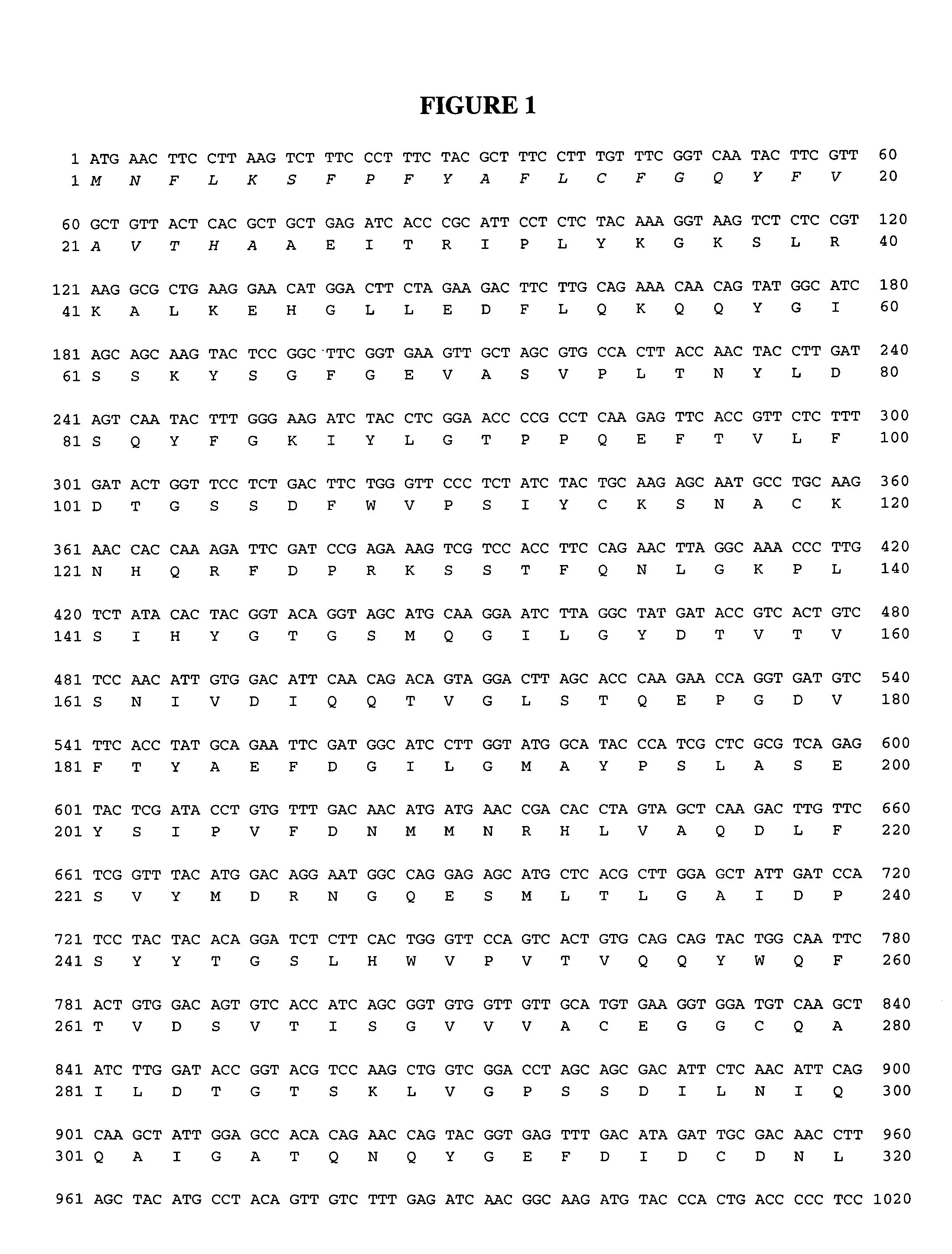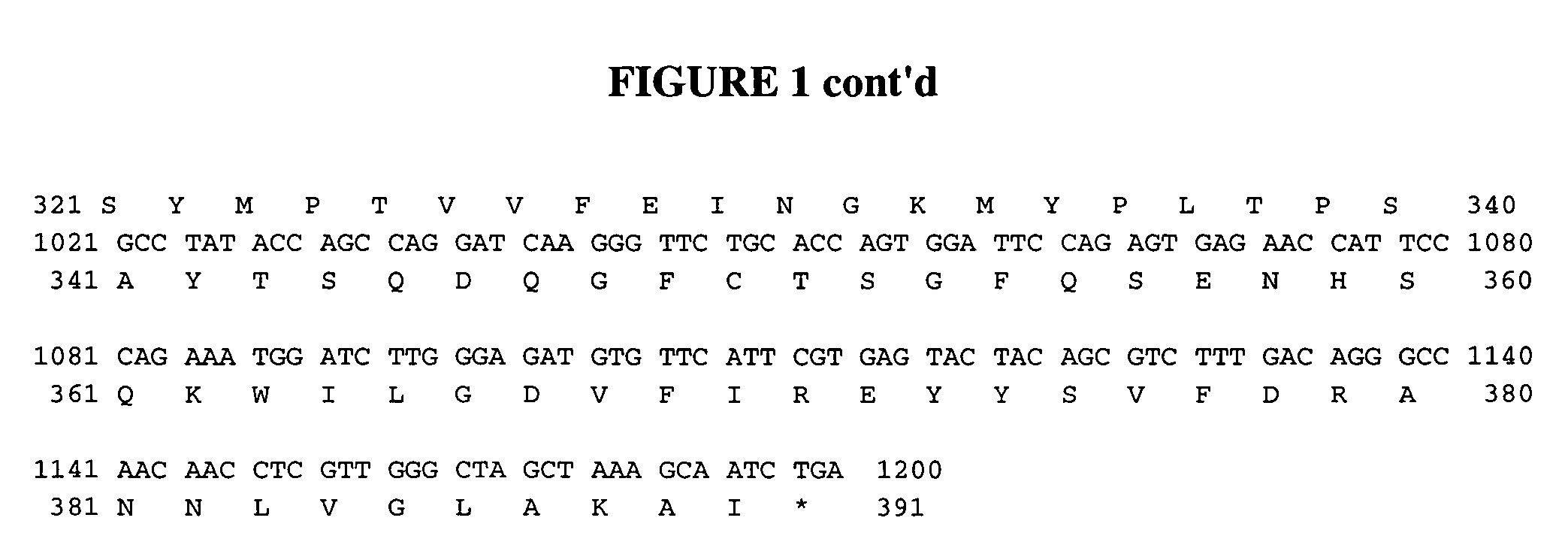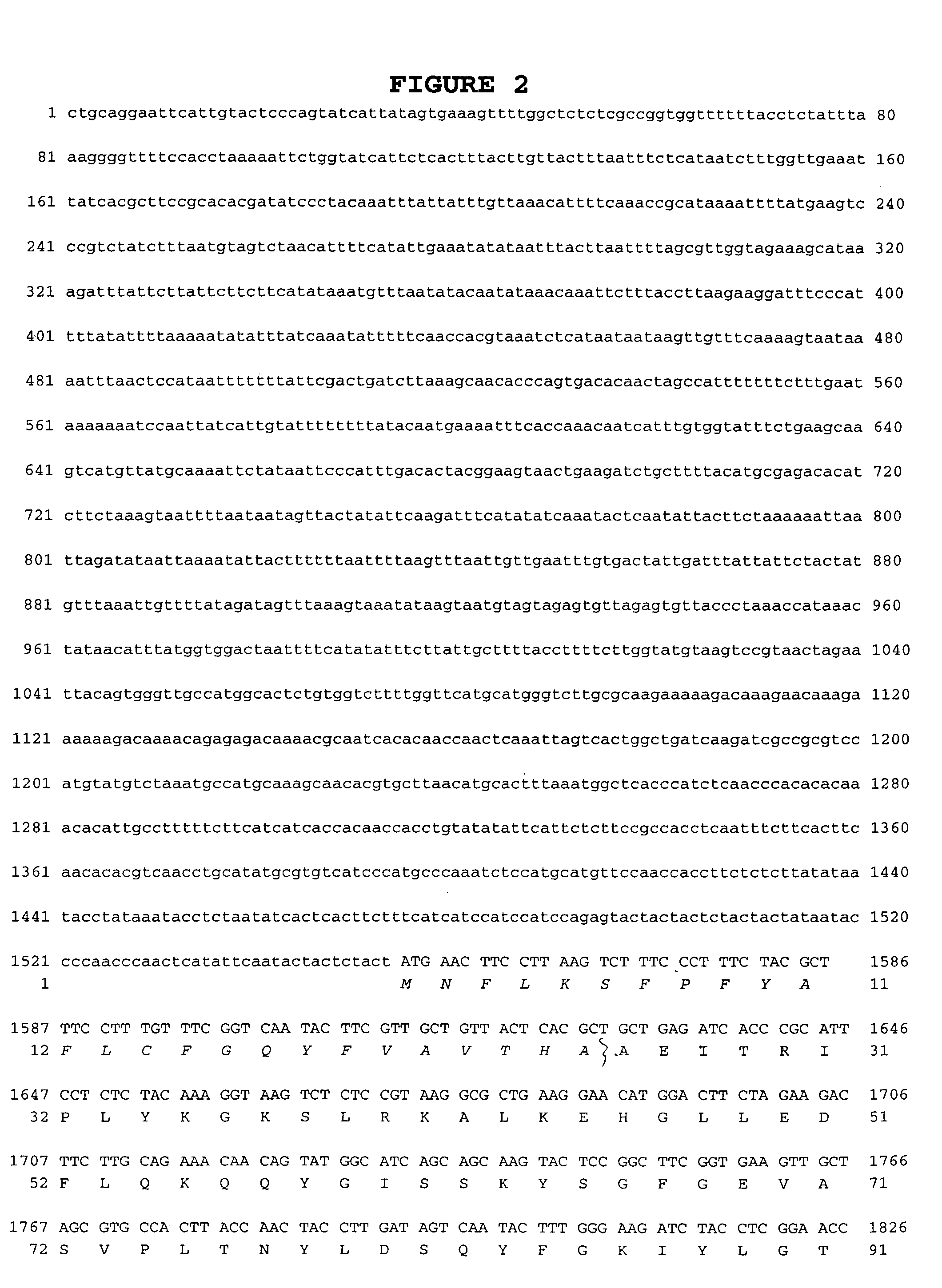Commercial production of chymosin in plants
a technology of chymosin and plants, which is applied in the direction of hydrolases, biochemistry apparatus and processes, fermentation, etc., can solve the problems of large water requirements, environmental problems, and difficult storage and shipment of raw materials containing chymosin
- Summary
- Abstract
- Description
- Claims
- Application Information
AI Technical Summary
Benefits of technology
Problems solved by technology
Method used
Image
Examples
example 1
Construction of a Plant Transformation Vector Comprising of a Chimeric Nucleic Acid Sequence Containing pre-pro-chymosin
[0136]A pro-chymosin gene was re-synthesized from the bovine pro-chymosin to reflect the plant-preferred codons (See FIG. 1 and SEQ.ID.NOS.: 1 and 2). Amino acids 27 to 67 are the pro-peptide sequence and amino acids 68 to 390 are the mature chymosin polypeptide. A PR-S signal sequence was attached to the 5′ end of the pro-chymosin gene by PCR fusion. The PRS sequence includes amino acids 1 to 26 in FIG. 1. The pre-pro-chymosin DNA fragment was fused in between a phaseolin promoter and the phaseolin terminator derived from the common bean Phaseolus vulgaris Slightom et al (1983) Proc. Natl. Acad Sc USA 80: 1897-1901). A complete sequence of the phaseolin promoter-preprochymosin-phaseolin terminator insert responsible for the expression of chymosin in plant seeds is shown in FIG. 2 and SEQ.ID.NO.:3. This insert was cloned into the PstI-KpnI sites of vector pSBS2004 ...
example 2
Generation of Chymosin-Expressing Transgenic Plants
[0137]Plasmids pSBS2151 and pSBS2165 were electroporated into Agrobacterium strain EHA101 (Hood, et al (1986) J Badteriol 144: 732-743). Agrobacterium strain EHA101 (pSBS2151) was used to transform Brassica napus. The procedure for the transformation of Brassica has been essentially outlined in Moloney et al. (1989) Plant Cell Reports 8: 238-242, except phosphinothricin, at a concentration of 1 to 2 mg / L, was used as the selectable agent. Agrobacterium strain EHA101 (pSBS2165) was used to transform flax cv Mc Gregor. Flax transformation was performed essentially as described in Jordan and McHughen (1988) Plant cell reports 7: 281-284, except transgenic shoots were selected on 10 μM L-phosphinothricine instead of kanamycin.
example 3
Expression Levels of Chymosin in Brassica
[0138]Physical characteristics of Brassica napus seed extracted chymosin were compared relative to commercially available bovine chymosin. The molecular weight of the two chymosin proteins was determined by gel electrophoresis on a 12% poly-acrylamide gel and Western blot analysis using a polyclonal rabbit antibody as shown in FIG. 3. Specified concentrations were loaded onto a 12% poly-acrylamide gel and transferred to a membrane. The membrane was probed with a polyclonal antibody raised against commercial available bovine chymosin and visualized using alkaline phosphatase. This polyclonal antibody is immunologically reactive with several bands in the transgenic seed extract. Bands of the same electroforetic mobility are found in the commercial bovine chymosin extract. This suggests that the majority of the pre-pro-chymosin in the seed extract has matured into chymosin. The lower molecular weight bands likely result from proteolytic digesti...
PUM
| Property | Measurement | Unit |
|---|---|---|
| molecular mass | aaaaa | aaaaa |
| temperature | aaaaa | aaaaa |
| temperature | aaaaa | aaaaa |
Abstract
Description
Claims
Application Information
 Login to View More
Login to View More - R&D
- Intellectual Property
- Life Sciences
- Materials
- Tech Scout
- Unparalleled Data Quality
- Higher Quality Content
- 60% Fewer Hallucinations
Browse by: Latest US Patents, China's latest patents, Technical Efficacy Thesaurus, Application Domain, Technology Topic, Popular Technical Reports.
© 2025 PatSnap. All rights reserved.Legal|Privacy policy|Modern Slavery Act Transparency Statement|Sitemap|About US| Contact US: help@patsnap.com



